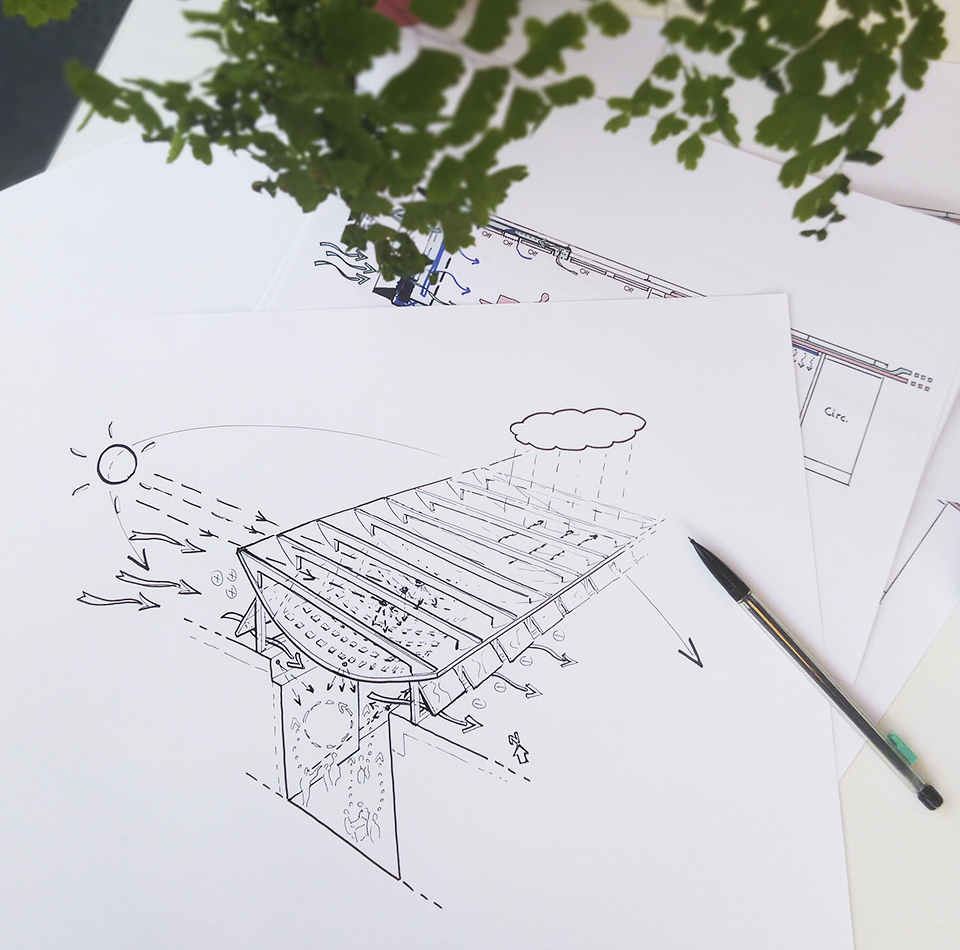E+C-, going beyond the regulatory equation to adopt low carbon building
Article originally published on the Egis group website in December 2019.
Launched at the end of 2016 in France, this experimental label, which anticipates the major upcoming revolution of the RE 2020 regulations, is a is a perfect transition towards a carbon free building world.
Aiming for positive energy (E+)
Because the energy signature is an essential criterion in building design, the efforts made to date in response to heat energy regulation changes should be pursued. It is still vital that we aim to make “positive energy” buildings, even if this theoretical difference between the energy respectively produced and consumed does not correspond in strict terms to the actual behaviour of the building.
The thousands of square metres we design every year have enabled us to obtain significant return on experience. Thus, we can certify that the best performances are almost always those which step outside the pure regulatory framework and require direct discussions with lawmakers or require investment which may (mistakenly) appear to be unreasonable in view of the issue at stake. This is all the more true in that the E3C2 goal (“E3” for level 3 energy-saving, “C2” for level 2 low carbon emissions), in a dense environment such as those of metropolitan areas, is pretty much the highest one can aim for, given today that the highest standard, E4C2, remains restricted to small surface area pilot operations on sites where there is an abundant supply of renewable energy.
In spite of these obstacles encountered during the design of the first E3C2 buildings, we are convinced that we are heading in the right direction and that the change in paradigm caused by RE 2020 will truly and at long last encourage low carbon construction.

Reducing the carbon footprint (C-)
The challenge set for the building world is clear: it must massively reduce its carbon emissions. With 70% of the overall footprint in the space of 50 years, the carbon footprint of materials is the main challenge. The E+C- label perfectly addresses this theme and anticipates RE2020.
To calculate the carbon impact according to E+C-, each material must be assessed using a life-cycle analysis (ACV in French), i.e. measuring the carbon “weight” of the manufacture, transport, use and end-of-life of the material in question. This weight, dictated by the INAIS database, is multiplied by the quantity of materials. The total footprint of a project conducted in the past would substantially exceed 1000 kg of CO2e/m² whereas in our new projects, we seek to go below 750 kg of Co2e/m². To do so, our engineers are mobilised to hunt out the slightest kilogram by optimising both quantity and the choice of material itself. Our expertise even allows us to go beyond the purely regulatory aspect of E+C- and adopt a more physical approach to the ACV.
In spite of these obstacles encountered during the design of the first E3C2 buildings, we are convinced that we are heading in the right direction and that the change in paradigm caused by RE 2020 will truly and at long last encourage low carbon construction.
The French 2020 environmental regulation (or RE2020) sets energy and carbon goals for all new buildings.


